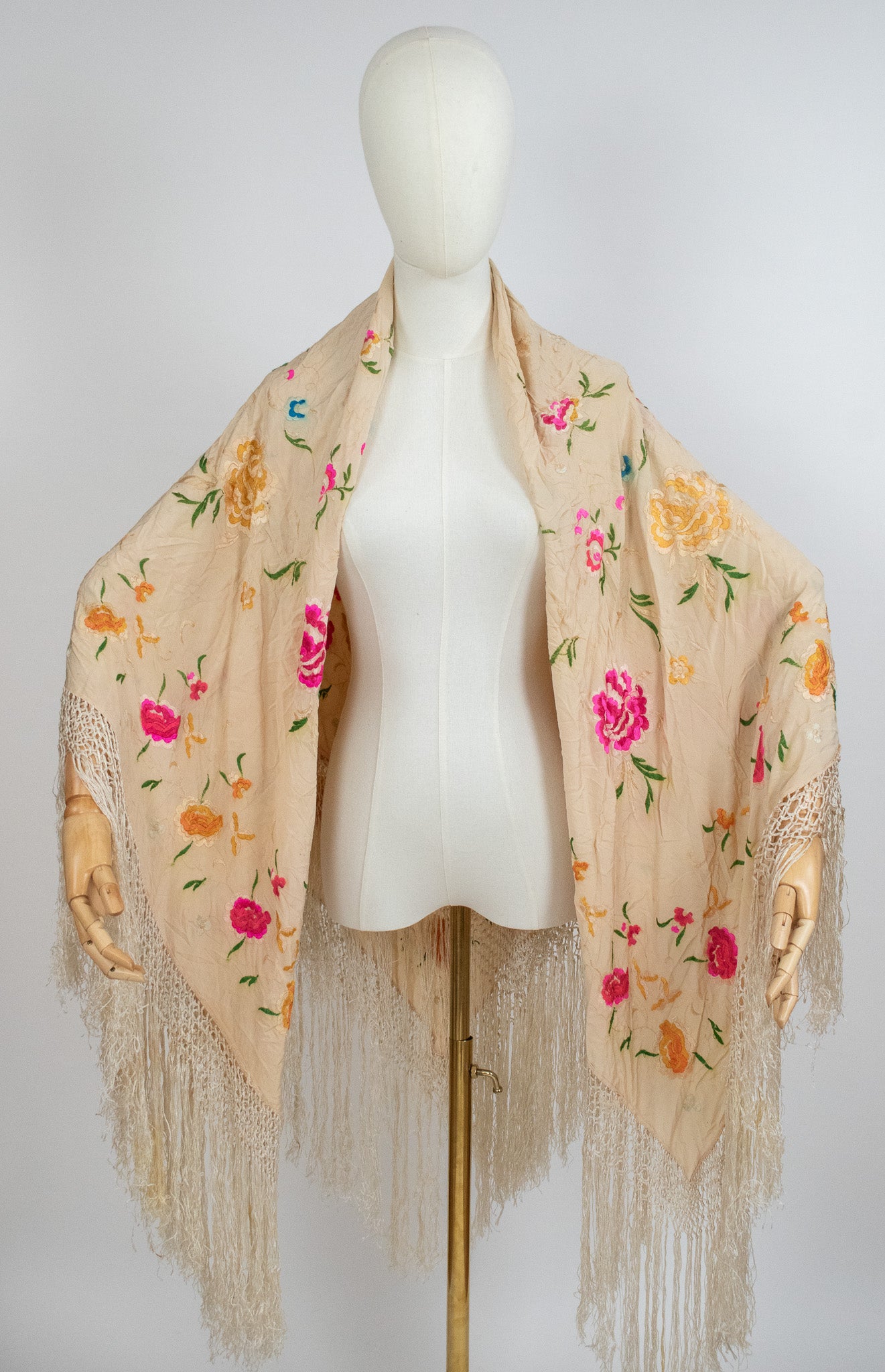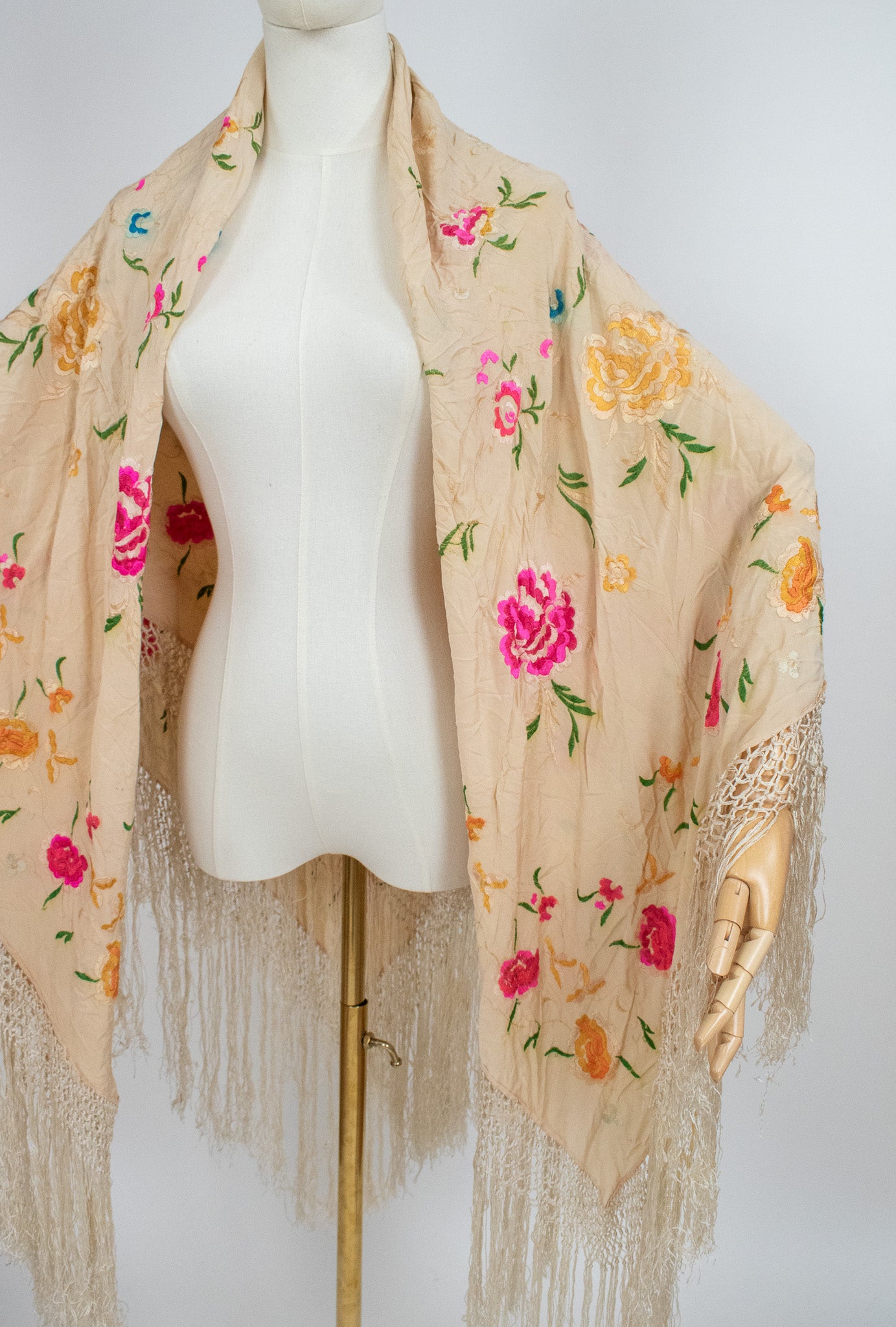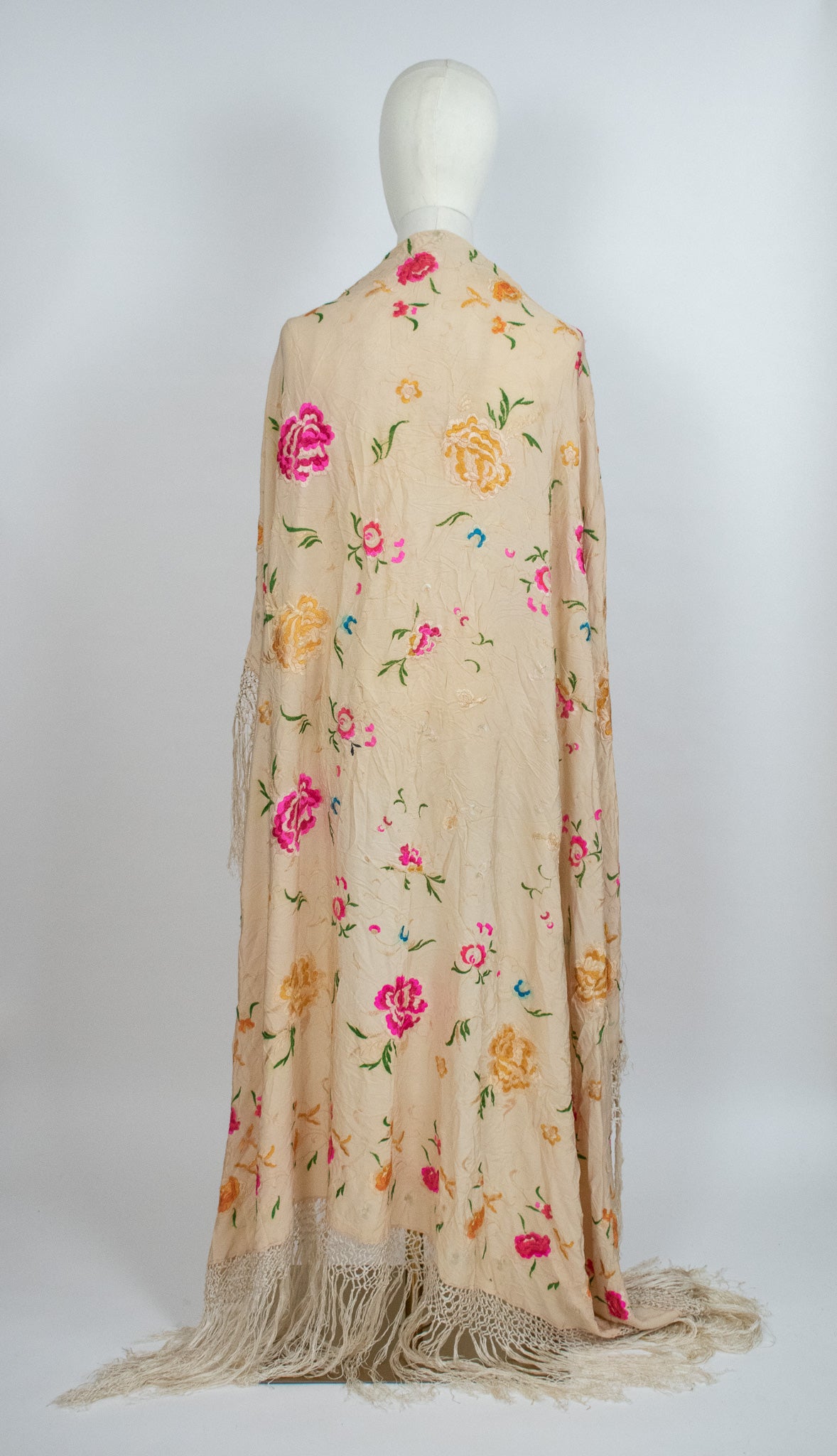House of Eliza
Vintage 1920s Ivory Silk Canton Floral Embroidered Piano Fringed Shawl
Vintage 1920s Ivory Silk Canton Floral Embroidered Piano Fringed Shawl
Couldn't load pickup availability
Share
Dating back to the 1920s, this magical silk shawl is embroidered with colourful flowers and leaves covering the entire shawl with hand knotted silk macramé fringed edges.
Size
48.5" x 51" without fringing
The fringing is 12" long
Condition Report
Some of the green and blue dyed silk threads have leaked surrounding some of the leaves and flowers. Please see the photos. We also have noticed a very small hole and some browning to a small area of fringing.
Please note colours may vary depending on your screen.
This is a vintage piece. Threads may be lose, imperfections may occur. We are always very honest with our listings and will always list any age related issues we notice but please be aware that this shawl is around 100 years old.
Shawls of the 1920s
In the 1920s, shawls played a significant role in women's fashion, reflecting the evolving styles and cultural shifts of the Roaring Twenties. This decade marked a departure from the more conservative Victorian and Edwardian eras, ushering in a period of liberation and change. The fashion landscape underwent a radical transformation, and shawls became a versatile accessory that epitomized the spirit of the time.
One of the most iconic elements of 1920s fashion was the flapper style, characterized by loose, dropped-waist dresses, knee-length skirts, and a rejection of corsets. Shawls seamlessly complemented this new silhouette, providing an extra layer of sophistication and flair. Women draped shawls over their shoulders or looped them around their arms, adding a touch of glamour to their outfits.
The fabrics used for shawls in the 1920s ranged from luxurious silk and velvet to more affordable options like rayon and chiffon. Fringe, tassels, and beading were popular embellishments, contributing to the overall vibrancy of the garments. Art Deco patterns, inspired by the modernist movement of the time, also adorned many shawls, showcasing bold geometric designs and stylized motifs.
Shawls were not only a fashion statement but also a practical accessory, providing warmth during cool evenings. They were especially popular at social events, where women could showcase their style while staying comfortable. Whether attending jazz-filled parties, speakeasies, or social gatherings, women embraced the freedom of movement offered by the loose, unrestrictive nature of shawls.
The cultural influences of the 1920s also played a role in shaping shawl designs. The fascination with exoticism and Orientalism, fueled by the popularity of artists like Josephine Baker and the Ballets Russes, inspired shawls with intricate patterns and vibrant colors reminiscent of Eastern aesthetics. This cultural fusion contributed to the eclectic and dynamic fashion scene of the time.
As the decade progressed, shawls continued to adapt to changing styles. The later 1920s saw the rise of more tailored and streamlined fashion, and shawls evolved to complement these new looks. However, the spirit of experimentation and expression that defined the 1920s fashion era left a lasting impact on the role of shawls in women's wardrobes.














